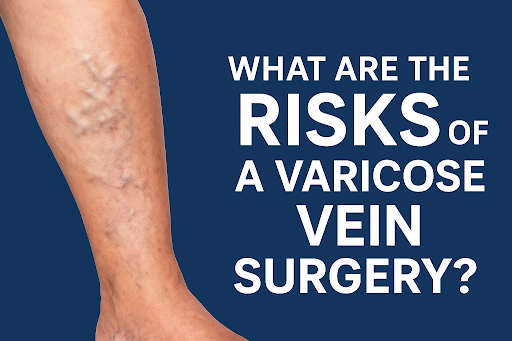Engaging in physical activity is undoubtedly beneficial, but for many, post-exercise joint pain can be a perplexing issue. This article delves into the science behind joint pain after a workout, offering insights into identifying warning signs of early arthritis and proactive measures to maintain joint health.
Why Do Joints Ache After Exercise?
Identifying Your Achy Joints
The occurrence of joint pain after exercise is not a one-size-fits-all experience, as it can be influenced by numerous factors. One primary factor contributing to post-workout joint discomfort is the mechanical stress placed on the joints during physical activity. The repetitive impact and strain on weight-bearing joints, such as the knees, can lead to micro-injuries or inflammation in the surrounding tissues.
Another aspect to consider is the type of exercise performed. High-impact activities, like running or jumping, tend to exert more force on the joints, potentially resulting in increased susceptibility to pain. On the other hand, repetitive motions in exercises like weightlifting may also contribute to joint strain.
Furthermore, the condition of the joints themselves plays a pivotal role. Pre-existing issues such as osteoarthritis, previous injuries, or underlying medical conditions can amplify the likelihood of post-exercise joint pain. In these cases, individuals might experience exacerbated discomfort due to compromised joint structures.
Inadequate warm-up or improper form during exercise is yet another factor that can lead to joint soreness. Insufficient warm-up fails to adequately prepare the joints for the impending stress, while improper form may place undue pressure on specific joints, potentially causing strain or injury.
Understanding the nature of joint pain is a crucial step in formulating an effective management plan. It might be acute, signaling temporary stress on the joints, or chronic, indicative of an ongoing issue that requires more comprehensive attention.
Warning Signs of Early Arthritis
While occasional joint aches may be dismissed because of physical exertion, persistent discomfort can be a potential red flag for underlying issues, and one of the conditions that might be implicated is arthritis. Arthritis, an umbrella term for various joint inflammations, can manifest in different forms, and recognizing its warning signs in the early stages is crucial for proactive intervention and preventing further damage to the joints.
Controlling Chronic Inflammation
The Role of Inflammation in Healing
Not all inflammation is detrimental; some are vital for the body’s healing process. However, chronic inflammation poses risks, especially when it interferes with post-exercise recovery.
Dangers of Suppressing Inflammation with NSAIDs
The common practice of using NSAIDs to curb inflammation raises concerns. This section explores why blocking healing inflammation might do more harm than good.
CRP Levels and Inflammation
C-reactive protein (CRP) serves as a marker for inflammation. Understanding its levels can be pivotal in gauging and controlling chronic inflammation.
Strategies for Controlling Chronic Inflammation
Practical approaches to control chronic inflammation involve lifestyle changes, anti-inflammatory diets, and the use of regenerative medicine. Learn how to tackle inflammation effectively.
Treating Joint Aches with Glucosamine and Chondroitin
The Role of Diet and Weight Loss
Discover the impact of weight on joint health and how adopting an anti-inflammatory diet can alleviate joint aches.
Supplements for Arthritis Pain
Beyond their traditional role, glucosamine and chondroitin exhibit anti-inflammatory effects, providing relief beyond the joints.
Top 10 Ways to Support Stem Cells
Explore a curated list of effective ways to support your body’s stem cells, contributing to overall joint health.
Treatment With Growth Factors
Platelet-Rich Plasma (PRP) Injections
Learn about the role of PRP in preventing minor issues from escalating and how it stimulates the body’s natural healing process.
The Role of Growth Factors in Healing
Uncover the significance of growth factors found in platelets and their orchestration in stimulating healing.
Tailoring Treatments for Different Age Groups
Age influences the body’s response to treatments. Understand how tailoring platelet concentrations can optimize healing based on age.
Being ProActive
The Importance of Addressing Warning Signs
Neglecting warning signs can lead to severe musculoskeletal problems. Being proactive is the key to maintaining an active lifestyle as you age.
The ProActive Program and Biologic Treatments
Explore practical advice on understanding warning signs and the role of biologic treatments, such as stem cells and blood platelets, in preventing joint issues.
Conclusion
Popping an anti-inflammatory pill might offer temporary relief, but understanding the root cause of joint pain is crucial. Addressing inflammation and treating joints with growth factors can pave the way for continued activity without the risk of an arthritis train wreck.
FAQs
1. Can joint aches after exercise be a sign of something more serious?
Yes, persistent joint aches may indicate early arthritis. It’s essential to address the cause rather than masking the symptoms.
2. Are NSAIDs a safe solution for post-exercise joint pain?
While they provide temporary relief, relying on NSAIDs to suppress inflammation can have long-term consequences. Exploring alternative methods is advisable.
3. How does weight affect joint health?
Excess weight puts additional strain on joints, contributing to pain and inflammation. Maintaining a healthy weight is crucial for joint well-being.
4. What is the ProActive program, and how can it help prevent joint issues?
The ProActive program offers practical advice and biologic treatments like stem cells and platelet procedures to address warning signs and maintain peak performance.
5. Are growth factor treatments suitable for everyone?
Age plays a role in the effectiveness of growth factor treatments. Tailoring concentrations based on age can optimize the response to these treatments.








